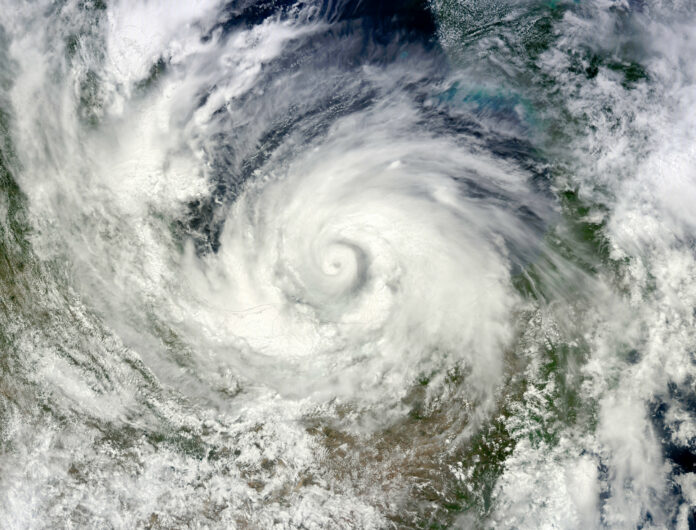Hurricane season has arrived in the U.S., and forecasters have predicted what level of storm activity we can look forward to in 2023.
Scientists at the Climate Prediction Center, a division of the National Oceanic and Atmospheric Administration (NOAA), have announced that the 2023 hurricane season, which runs from June 1 to November 30, has a 40 percent chance of being a normal season, and a 30 percent chance of being either an above-average or below-average season.
Forecasters are also predicting that there will be between 12 and 18 named storms, of which five to nine will become hurricanes. Between one and four of those are predicted to become major hurricanes of category 3 or higher.
“With a changing climate, the data and expertise NOAA provides to emergency managers and partners to support decision-making before, during and after a hurricane has never been more crucial,” NOAA administrator Rick Spinrad said in an accompanying statement. “To that end, this year we are operationalizing a new hurricane forecast model and extending the tropical cyclone outlook graphic from five to seven days, which will provide emergency managers and communities with more time to prepare for storms.”
Hurricanes are powerful tropical storm cells that have exceeded wind speeds of 74 mph. As the storm gets more powerful and increases in speed, it is classified in categories from 1 to 5, with categories 2 through 4 having wind speeds of between 96-110 mph, 111-129 mph, and 130-156 mph, respectively. Category 5 hurricanes have speeds of over 157 mph.
ISTOCK / GETTY IMAGES PLUS
“There are a few main environmental factors that influence how powerful a storm can get. The most popular factor is the temperature of the ocean water beneath the storm,” Sam Lillo, a forecast engineer at DTN Weather, previously told Newsweek.
“Wind blowing over water causes an exchange of moisture into the atmosphere, encouraging the growth of deep clouds and heating that intensifies low pressure at the surface, ultimately strengthening the winds and furthering this feedback loop. The warmer the water is, the more moisture and heat that can fuel the storm, and the stronger this feedback process becomes,” he said.
This season is expected to be less severe than those of recent years, due to the lack of presence of La Nina. NOAA explained in the statement that La Nina has now ceased, with there being a high potential for El Nino to develop this year, which can suppress hurricane activity in the Atlantic.
However, the forecast doesn’t mean that the hurricanes this year won’t cause huge amounts of damage in the areas where they make landfall.

ISTOCK / GETTY IMAGES PLUS
“As we saw with Hurricane Ian, it only takes one hurricane to cause widespread devastation and upend lives. So regardless of the number of storms predicted this season, it is critical that everyone understand their risk and heed the warnings of state and local officials. Whether you live on the coast or further inland, hurricanes can cause serious impacts to everybody in their path,” said FEMA administrator Deanne Criswell in a statement. “Actions taken today can save your life when disaster strikes. The time to prepare is now.”
With the encroaching effects of climate change, it is thought that hurricanes might get more powerful, and more frequent.
“The science on how hurricanes will change in the future is fairly complex and not entirely settled, but a few things are generally accepted,” Daniel B. Wright, a civil and environmental engineer at the University of Wisconsin-Madison’s Hydroclimate Extremes Research Group, told Newsweek last November. “1) there might not be more hurricanes overall, but those that do form will tend to be more intense both in terms of the strength of their winds and the amount of rainfall that they produce; 2) because of this intensification and also due to some potential changes in the directions that storms tend to move, it is probable that there will be more Category 4 and 5 storms hitting the U.S.”
“A recent study by collaborators of mine at NOAA’s Geophysical Fluid Dynamics Lab recently estimated that the number of Category 4 and 5 storms might be four times the current average by the end of the century,” he said. “The increases in rainfall that come from a warmer atmosphere will also be really important,” Wright said. “Rain from hurricanes and the freshwater flooding that it causes isn’t necessarily the first thing many people think of related to hurricanes, but it was the main story for Hurricane Harvey (the second-most damaging storm in US history) and has historically been a bigger killer than hurricane winds and waves.”
Additionally, the impacts of storm surges may worsen due to the combined effect of sea level rises.
“We are seeing increased human exposure to tropical cyclone-related hazards and impacts”, Chris Slocum, a physical scientist at NOAA, previously told Newsweek. “Storm surge and flooding cause the most deaths during landfall. With climate change, sea level rise increases the impact of storm surge, and slower-moving storms that are trending to be wetter increase flood risk in that more intense rain falls for longer periods. These impacts are highly regional and unequally distributed because of coastal structure and local topography.”
Do you have a tip on a science story that Newsweek should be covering? Do you have a question about hurricanes? Let us know via [email protected].


